
In the complex world of electronic circuits, various circuit module devices need to communicate with each other to work together. The I2C interface acts as a communication bridge between these circuit module devices, and today we will delve into it.
1. Starting with a Physical Example
The image below shows an I2C module I created.
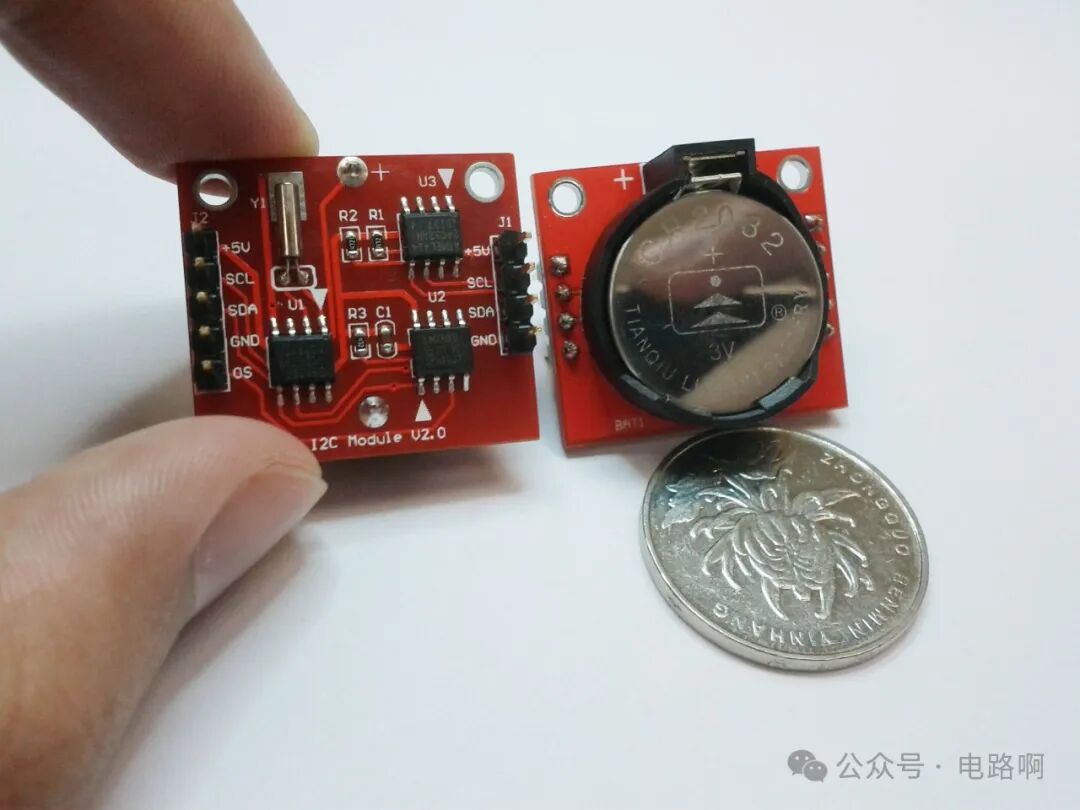 On this small PCB, there are three chips.They are the RTC clock chip DS1307, the memory chip AT24C32, and the temperature sensor chip LM75.
On this small PCB, there are three chips.They are the RTC clock chip DS1307, the memory chip AT24C32, and the temperature sensor chip LM75.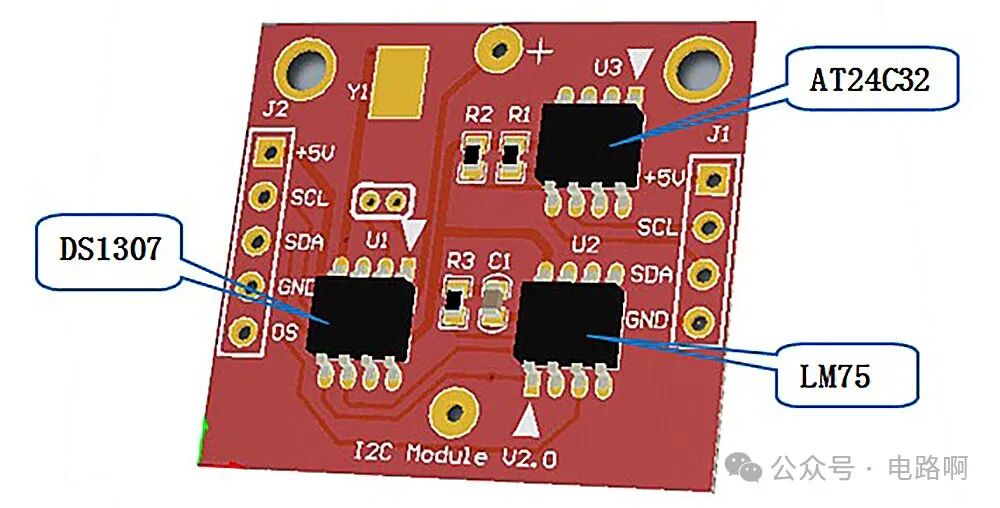 All three chips use the I2C interface, and the three chips are “parallel” on the I2C interface.
All three chips use the I2C interface, and the three chips are “parallel” on the I2C interface.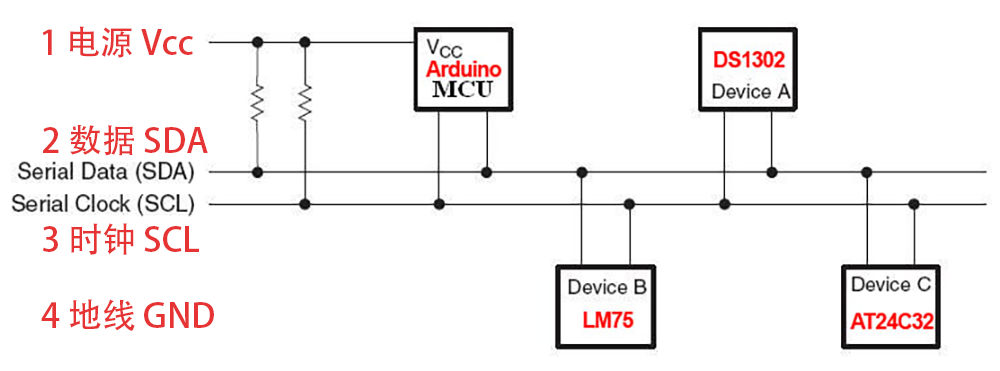 Thus, communication between the main control chip MCU and these three chips can be achieved through just two lines (not counting the power Vcc and ground GND).
Thus, communication between the main control chip MCU and these three chips can be achieved through just two lines (not counting the power Vcc and ground GND).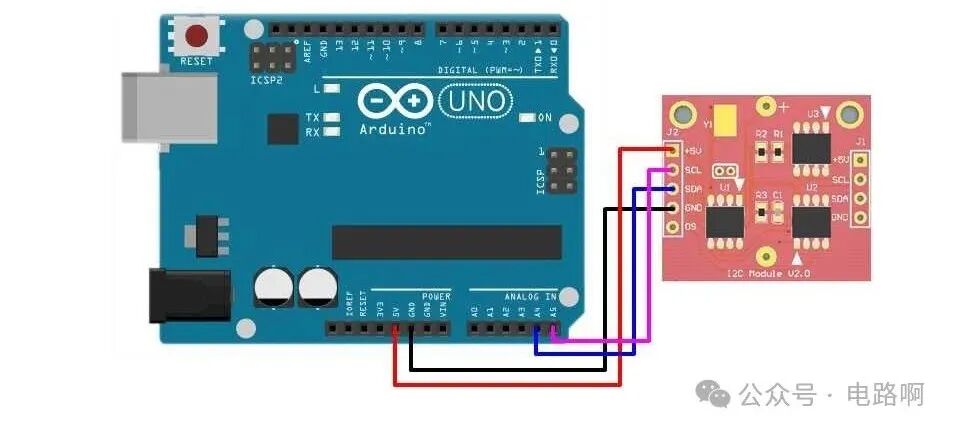 2. What is the I2C Interface?
2. What is the I2C Interface?
I2C (Inter-Integrated Circuit), developed by Philips, is a simple, bidirectional two-wire synchronous serial bus that only requires two lines—Serial Data Line (SDA) and Serial Clock Line (SCL)—to transmit data between connected devices. This is akin to two people communicating, where SDA is responsible for conveying the content of the conversation, and SCL controls the rhythm of the speech, ensuring a smooth and orderly exchange.
3. How I2C Works
1. Addressing and Handshaking: Each device connected to the I2C bus has a unique address. When the master wants to communicate with a slave, it first sends a clock signal via SCL and transmits the slave address on SDA. Once the slave recognizes its address, it responds by pulling SDA low, completing the handshake, similar to calling a friend’s name in a crowd and having them respond.
2. Data Transmission: Data is transmitted in bytes, with the master and slave synchronizing via SCL, sending data one bit at a time through SDA. During transmission, the high bit is sent first, followed by the low bit, much like delivering packages in order.
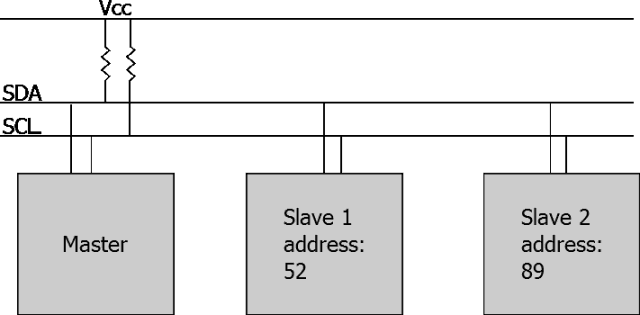 4. Unique Advantages
4. Unique Advantages
1. Simple Hardware: Only two wires are needed, significantly reducing the complexity of circuit board wiring and the number of pins, thus lowering costs, similar to building an efficient pathway with minimal materials.
2. Multi-Device Connection: A single I2C bus can connect multiple devices, easily enabling interconnectivity among devices, like a street connecting numerous households.
3. Synchronous Transmission: The SCL clock signal ensures accurate data transmission, preventing data loss or confusion, akin to a precise clock conducting an orchestra.
5. Common Application Scenarios
1. Sensor Data Acquisition: In devices such as temperature and humidity sensors and accelerometers, the I2C interface efficiently transmits sensed data to the main control chip, facilitating real-time monitoring of environmental changes.
2. EEPROM Read/Write: Used for storing device configuration information, the I2C interface allows for quick read and write operations, ensuring the normal operation of the device.
6. Conclusion
Although small, the I2C interface plays a crucial role in electronic circuits, laying the foundation for the collaborative operation of various devices.
With technological advancements, it will shine in more fields, continuously driving progress in the electronic world.